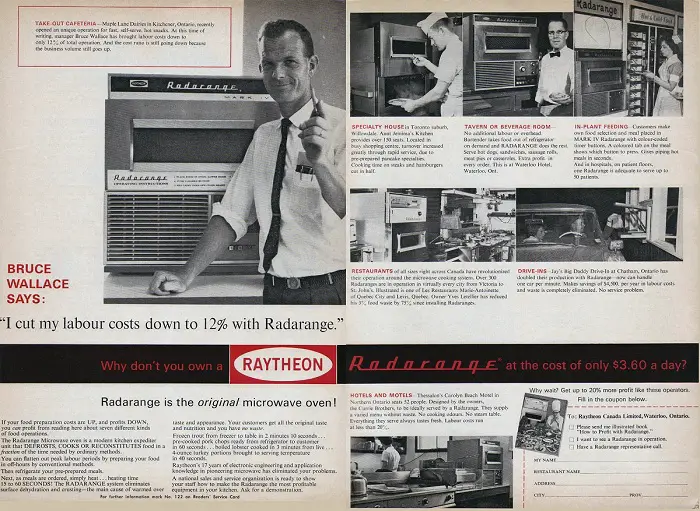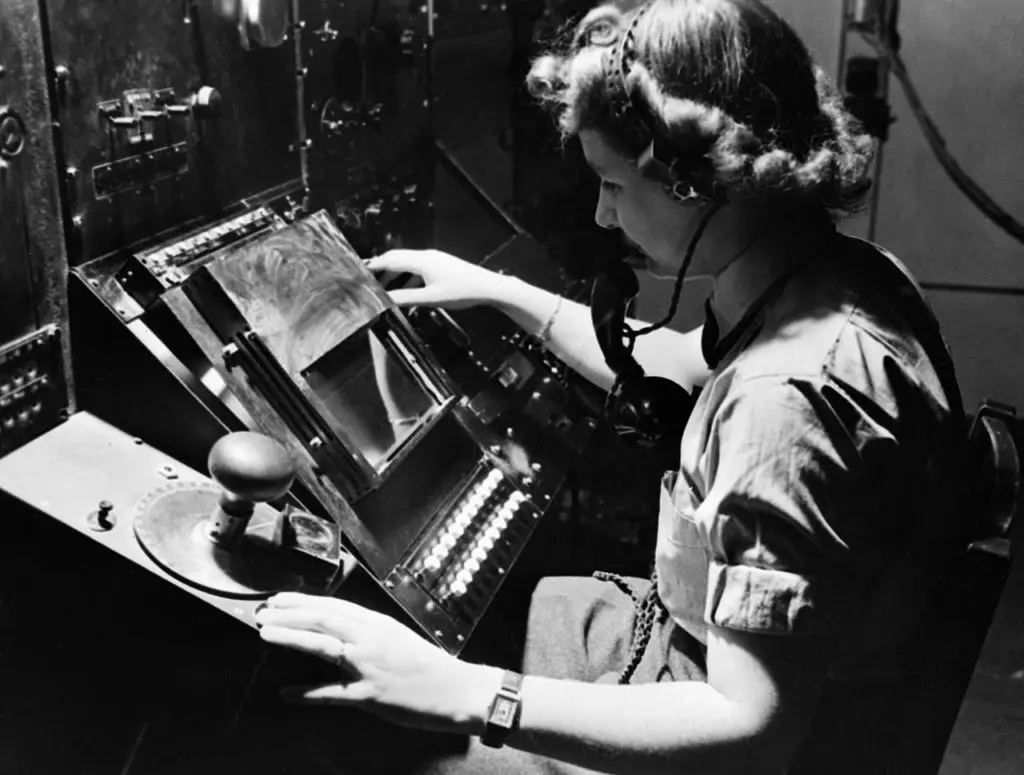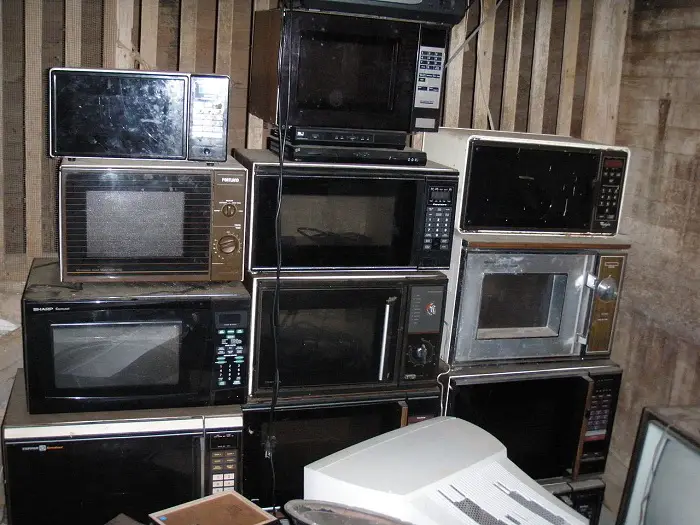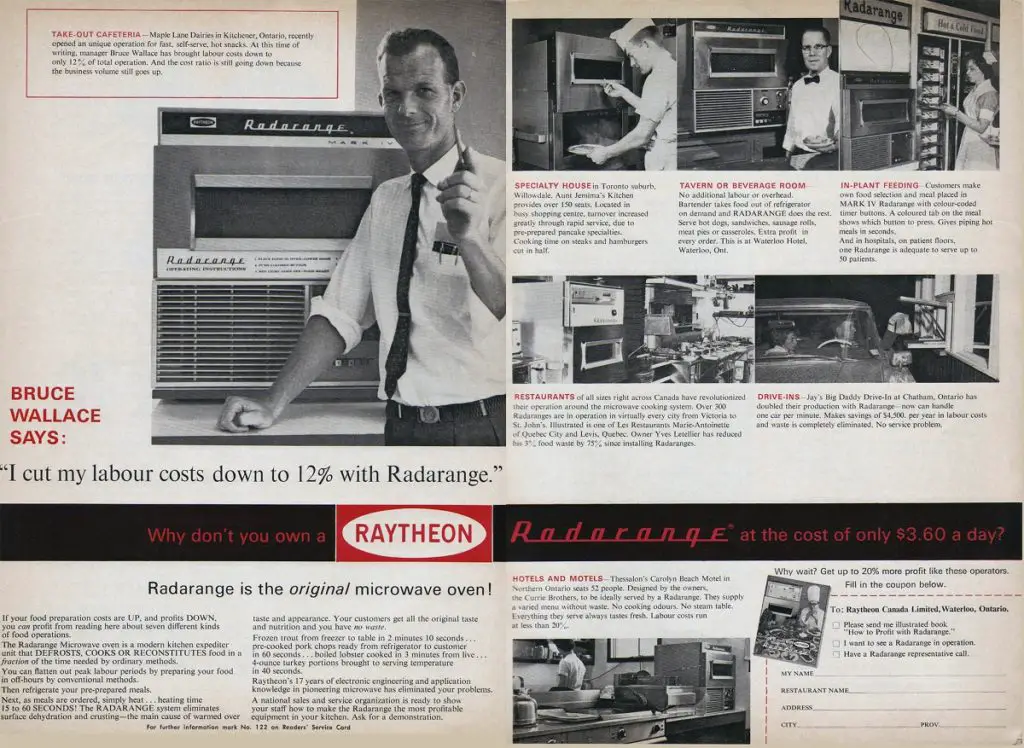They used to be something of a novelty: a high-end kitchen appliance you would sometimes find in restaurants, cruise ships, or trains. Now you are likely to find one in any home within a power grid.
The first microwave oven, built by Massachusetts-based defense contractor Raytheon in 1946, operated for three decades in the kitchen of one of the company’s founders.
Raytheon
named the appliance the “Radarange.”

Contents
The Discovery of Microwave Cooking
The name points to the microwave oven’s technological provenance. As with many other 20th-century household innovations, the microwave oven was a product of World War II research and development in defense technology.
The bulky contraption heated food using the same radio-wave-producing magnetron tubes that Raytheon manufactured for military radar.
Raytheon credits the discovery of microwave cooking to Percy Spencer, a grade-school-educated engineer known throughout the company for his cleverness and curiosity.
The story goes that, one day in 1945, Spencer was walking through a radar test room with a chocolate bar in his pocket. He came too close to a running magnetron tube and the candy began to melt.
That was enough to set off a series of experiments. Spencer and his fellow engineers were soon pointing magnetrons at kernels of corn to watch them pop.
They conducted the same experiment on an egg and saw it cook so quickly it exploded.
Within months, Raytheon executives were sampling microwaved meals in the company’s executive dining room.

The Radarange
By 1946, Raytheon was marketing the Radarange. Ten years later, Tappan, which licensed the technology, offered a wall-mounted version of the appliance for use in high-end kitchens.
The Tappan Model RL-1 Microwave Oven cost US$1,295, the equivalent of about $12,000 today.
The appliance was primarily a commercial cooker, providing hot meals on ocean liners, trains, and in restaurants and hotel dining rooms.
In 1963, a chance dinner meeting between two Raytheon executives and the president of Amana Refrigeration resulted in the sale of Amana to Raytheon.
Raytheon built on Amana’s experience in marketing and distributing consumer goods, and in 1967, introduced the countertop Amana Home Radarange. The ovens cost less than $500 each.
Still, not many consumers were buying. In Australia, a few take-away food outlets began importing the new kitchen appliance for use in business.
The
price was still a bit steep for most homeowners at the time, and reports had
begun to emerge that the new contraptions leaked deadly radiation.

“No Solid Safety Data”
In March 1973, the US Consumers Union warned people that no microwave oven was “completely safe.” The organization based its assertion on the argument that there was no solid data on safe levels of radiation emission.
US Food and Drug Administration officials testified to the reliability of their standards before the Senate Commerce Committee’s radiation control hearings. Microwave oven manufacturers declared the safety of their products in publicity campaigns.
Finally, during the mid-1980s, the price of microwave ovens began to drop as Japanese and Korean manufacturers entered the American market.
By 1986, a quarter of American households owned microwave ovens.
By then, more than half of all married women in the US were working. There was little need to ask why more and more homeowners were willing to pay for timesaving technologies.
Those same employment statistics have continued to rise over the years and so have the sales of microwave ovens.

Kitchen Espionage
Every piece of technology in your home has a history. The microwave oven’s origins weave together a curious jumble of military research, government regulations, women’s employment statistics, and public health issues.
Kellyanne Conway, President Trump’s senior adviser, famously warned that the now ubiquitous appliance might be spying on us.
While Conway might regard her own microwave oven with suspicion, statistical data shows that most people are not as distrustful of the modern kitchen mainstay.
In fact, most parents consider microwave ovens safer than open flames and hot burners, according to the New York Times.
Today, some 90 percent of American homes have microwave ovens. Forecasts suggest that manufacturers will ship about 13.5 million more units across the country this year alone.
Worldwide, the market for microwave ovens reached US$8 billion last year. Experts say the value of the market is likely to rise to US$11.5 billion by 2025.
After all, who on earth doesn’t enjoy a quick bowl of microwave-hot soup every now and then?






